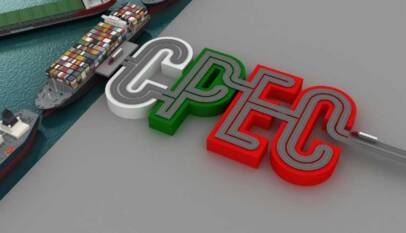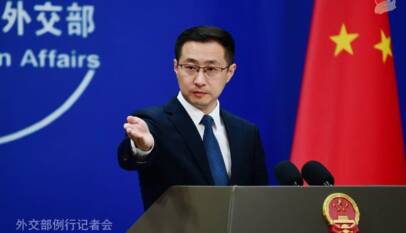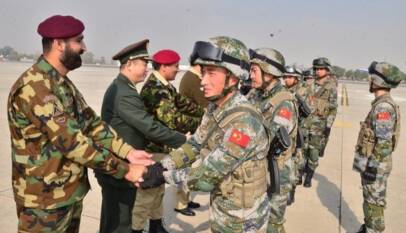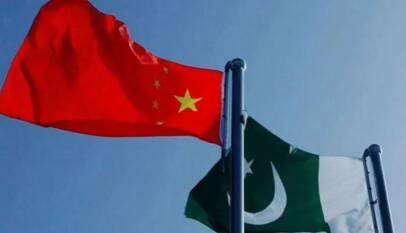CPEC’s regional trade connectivity
The China-Pakistan Economic Corridor (CPEC) attracts huge regional attention. The CPEC is more about regional trade connectivity by providing a modern and efficient corridor for regional trade. The CPEC, in other words, is a symbol of trade connectivity. Because of difficult terrain and regional geographical dis-connectivity for ages, further compounded by exploitative colonialism in China, South Asia, East Asia and Central Asia, economies were disjointed and remained neglected.
It was not in the interest of British Imperial India, for instance, to promote trade between the Indian subcontinent and China. By exporting opium from India into China in the 19th century, the British virtually destroyed trade between India and China.
So did French. Japan, on the other hand, fully exploited China and the Korean Peninsula for quite some time until 1945. The Spaniards, Portuguese, Russians and Americans also exploited their “sphere of influence” rather than genuinely integrating parts of East Asia, China, South Asia, and Central Asia as they were not in their interests.
The British in India and the Japanese developed an understanding and signed an agreement not to interfere in their respective and exploitive spheres of influence in South and East Asia until the early 1920s. Trade was also discouraged between British India and Japan during colonisation.
After the end of colonisation by the 1940s, Asian nation-states mainly remained busy with the nation building processes. Little efforts were paid on the regional trade integration. The Association of South East Asian Nations (ASEAN) emerged as main locomotive of the intra-ASEAN trade integration by the late 1960s.
The incorporation of China into the ASEAN process in 1995 was a significant milestone in the promotion of regional trade connectivity. China emerged as the major trading partner of a number of ASEAN members. The country also emerged as source of in-bound and out-bound investment. This flourished regional trade between ASEAN and China. In the ASEAN-China trade nourishment; there were ASEAN members who played a leading role in bringing China into ASEAN hold.
The two decades long ASEAN-China promising relations have resulted into China’s One Belt and One Road initiative as espoused by President Xi Jinping in September 2013 during his visit to Kazakhstan and Jakarta in October the same year. The purpose was the continuity of trade relations as developed by ASEAN and China by bringing the canvas much broader by incorporating, inter alia, East Asia, South Asia, West Asia, as well as the African and European continents.
This was the Chinese thinking in contrast to imperialist and colonialist thinking. China does not promote either exploitation or imperialism but promotes a cooperative relationship. It would like to share the development experience across the whole world. China has been offering the world’s ever largest trade connectivity by integrating the whole Asian continent as well as giving benefits to nearby Africa and Europe.
Because of geographical connectivity, Pakistan has become the flagship project of the One Belt, One Road initiative. At first, the project was offered to Pakistan when Premier Li Kiqiang visited Pakistan in May 2013 and addressed the Parliament.
The CPEC, in fact, promotes Pakistan’s regional trade by introducing new trading routes and by modernising the old trading routes. New infrastructure of roads and carriages will be built in Balochistan, Sindh, Punjab, Khyber Pakhtunkhwa, Azad Kashmir, and Gilgit-Baltistan. This would make Pakistan “most infrastructurally developed country” in Asia on modern telecommunication lines.
Provinces and major cities will be connected by high speed limited access highways, motorways, bridges, tunnels, and railway tracks. China plans to ply high-speed railways in Pakistan. Chinese high speed railways run between 200-350 km per hour speed. This will change the outdated railway system of Pakistan and change it on modern pattern.
China is a global leader in high speed railways far ahead of Japan, United States, and Germany etc. At the moment, China’s railway industry is engaged in infrastructure negotiations with at least 30 countries. China’s high speed rail bidding is much lower than developed countries.
In the past 12 years, China has built 16,000 km of high-speed track within its borders — longer than the rest of the world’s network combined. China has been building high speed railways in Indonesia and Russia and it has been investing in high speed rail in California. China outbid Japan in Indonesian high-speed railway.
If 200 km per hour moderate bullet train runs between Karachi-Peshawar, it would cover the distance in nine hours and between Islamabad-Lahore in one hour and 15 minutes. Days long distances between all cities will be reduced. This will be a miracle in rail transportation in Pakistan.
All type of industries will be built. The CPEC would turn Pakistan into a knowledge-based corridor and develop into a truly Asian tiger, turning into a hub economy to meet the demands of China and Central Asia.
Besides, transportation, CPEC will also revolutionise Pakistan’s regional trade. Pakistan’s trade with its neighbours, namely with China, India, Iran, Afghanistan, and immediate Central Asian Republics would likely witness a quantum jump.
–The writer is Senior Research Fellow at the Institute of Strategic Studies Islamabad. He is an expert on Japan, China, and East Asian affairs.
Chinese Ambassador highlights significance of Third Plenary Session for China-Pakistan cooperation
The Third Plenary Session of the 20th Central Committee of the Communist Party of China ha…












